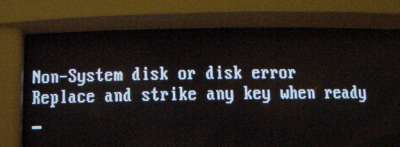Booting the Computer
Whenever you turn on your computer, the first thing you see is the BIOS software doing its thing. On many machines, the BIOS displays text describing things like the amount of memory installed in your computer, the type of hard disk and so on. It turns out that, during this boot sequence, the BIOS is doing a remarkable amount of work to get your computer ready to run. This section briefly describes some of those activities for a typical PC.
After checking the CMOS Setup and loading the interrupt handlers, the BIOS determines whether the video card is operational. Most video cards have a miniature BIOS of their own that initializes the memory and graphics processor on the card. If they do not, there is usually video driver information on another ROM on the motherboard that the BIOS can load.
Next, the BIOS checks to see if this is a cold boot or a reboot . It does this by checking the value at memory address 0000:0472. A value of 1234h indicates a reboot, and the BIOS skips the rest of POST. Anything else is considered a cold boot.
If it is a cold boot, the BIOS verifies RAM by performing a read/write test of each memory address. It checks the PS/2 ports or USB ports for a keyboard and a mouse. It looks for a peripheral component interconnect ( PCI ) bus and, if it finds one, checks all the PCI cards. If the BIOS finds any errors during the POST, it will notify you by a series of beeps or a text message displayed on the screen. An error at this point is almost always a hardware problem.
The BIOS then displays some details about your system. This typically includes information about:
- The processor
- The floppy drive and hard drive
- Memory
- BIOS revision and date
- Display
 This is the message you get if a floppy disk is in the drive when you restart your computer. |
The BIOS has tried to boot the computer off of the floppy disk left in the drive. Since it did not find the correct system files, it could not continue. Of course, this is an easy fix. Simply pop out the disk and press a key to continue.
Back to How It Works
› Introduction to How BIOS Works
› What BIOS Does
› Booting the Computer
› Configuring BIOS
› Updating Your BIOS